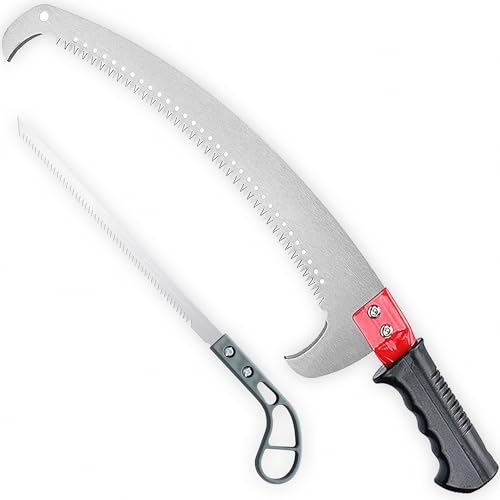As I have mentioned before, as I get older my methods seem to change. Since I rarely get a real easy takedown, most of the young fellows do them faster and cheaper, I am getting a little more cautious. When I was younger, I really enjoyed the arborist's convertible, where you drop the top and go for a ride. Following an acquaintances demise, when a white pine broke below him as he dropped the top, I have changed techniques a little. Although the exact cause of the accident was never determined, one factor that may have lead to the failure was the whiplash effect on the trunk as the top pushes it one way and then jerks it back the other when the top snaps off. This effect is lessened considerably if there are some branches left on to absorb some of the forces, pushing the wind out of the way on both movements.
Since the trees, predominantly Colorado and White spruce, are generally in tight places, where I do not want a whole lot of swing from the top, I have started cutting a notch up one side of the tree as I go up to guide the top down. I set a line, drop the top, with very limited sway from the tree, and then come down on my climbing line and lanyard removing the rest of the branches as I go. If space is real tight, I will set up a vertical speedline to keep the butts close to the tree when I drop them, again using the clear notch down the side. This may not work as well in the pines, with more upright growth habits. As mentioned before, the top may hang up quite a bit more.
I realize that for the people who have underbid and need to make production this is not the fastest way. But as I get older I have learned that most people who have money think that price and quality are related, so they are willing to pay more if you appear to be working safer and doing a good job. I am by no means the cheapest climber around, but I have never collected on my insurance in 41 years, nor missed work from a tree related injury since 1970 (one handing a chainsaw on the ground).























































